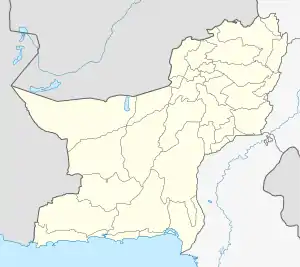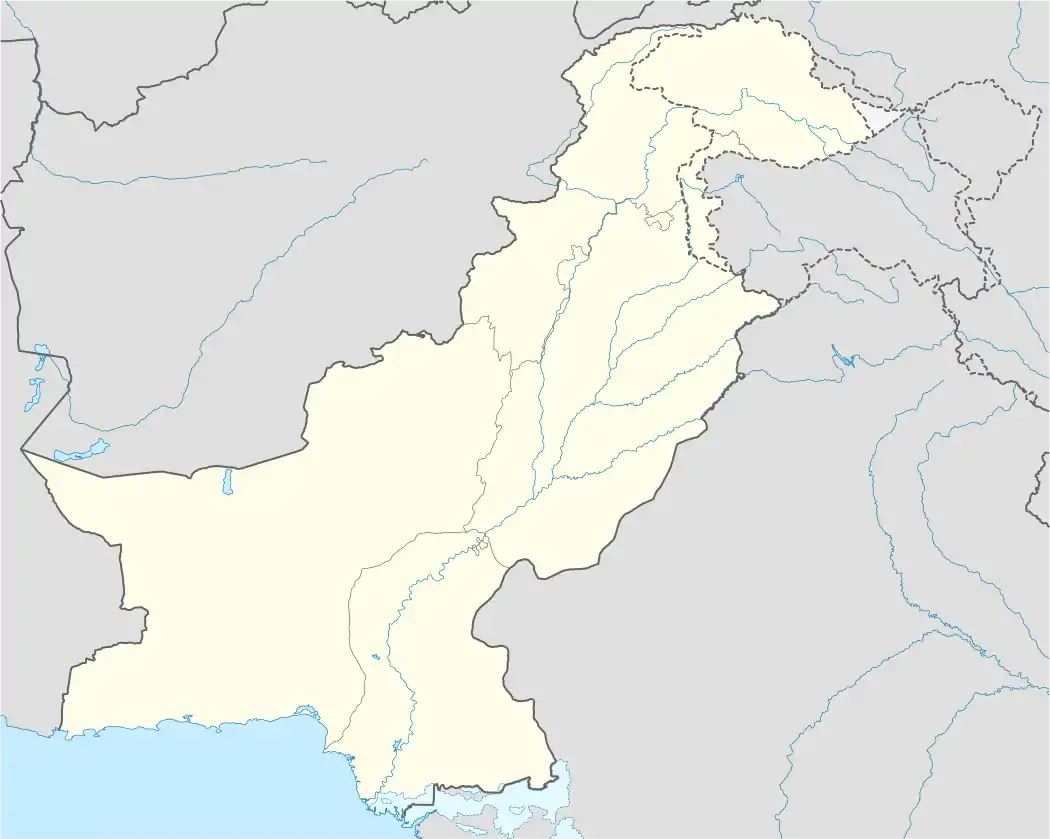Usta Mohammad
Usta Mohammad (Urdu: اوستہ محمد) is a city and sub-division of the Jafarabad District of Balochistan Province, Pakistan.
Usta Mohammad اوستہ محمد | |
|---|---|
City | |
 Usta Mohammad اوستہ محمد  Usta Mohammad اوستہ محمد | |
| Coordinates: 28°10′42″N 68°2′35″E | |
| Country | Pakistan |
| Province | Balochistan |
| District | Jafarabad District |
| Languages Spoken | Balochi, Sindhi, Brahui, Saraiki |
Geography
The subdivision has an area of 978 km². The city has an area of 3.3 km².
Demographics
The population was estimated to be 186,226 in 2017.
The majority of the people are Balochs, Brahvis and Jamotes;
The Baloch tribes include Jamali, Babbar, Umrani, Rind, Bulledi, Jatoi, Hijwani, Bugti, Mastoi Chandia and others
The Brahui tribes includes Mengal, Bangulzai, Jattak, Lehri, Pandarani, Neechari, Zehri and others
The Jamotes includeQureshi , Soomro Siyal, Usto Palal, Abro, Seelra, Mangi, Solangi, Maken, Langah, Boohar, Kori, Bhangar, Samejo Sheikh Tunio and others
Despite of those Hindus are also in majority mostly in the city area of Usta Mihammad, and Punjabis in the minority.
Governance
The City has one Municipal Corporation where Chief Administrator sits, and an Office of Assistant Commissioner who controls the City's executive works and Price Control.
Unions in the district are Ali-abad, Faiz-abad, Khanpur, Bari Shaakh, Mehrabpur, Piral-abad, Qabula, Samaji, Sobarani, Usta Muhammad I, Usta Muhammad II and Usta Muhammad III.
Geography
Usta Mohammad is in the Kachhi plain basin, with an average altitude of about 55 meters. Annual rainfall is about 90mm, of which 60mm falls in winter (November–May).[1] Winters are cold, and summers are dry and hot.
Economy
As 2020 report;
People in City area of Usta Muhammad are much Noble and have Businesses in Commercial Places and mostly wealthy People here own their Rice mills, and some have Estate Agency businesses. Mostly people in City are Poor who are Labours
While in Remote Areas People are Land Lords and others have their small businesses as the 2020 reports.
The people of the district are noble Families poor, with inadequate access to medical supplies and facilities.[2]
Crops include rice, wheat and sorghum. A 2002 survey determined that the incidence of Sporisorium sorghi, the causal organism of sorghum grain smut, reached 7% in Usta Mohammad.[3] A survey of rice farmers found that 33% were illiterate, 55% farmed from 12-40 acres of land, and 58.3% were tenant farmers.[4] Some farms raise cattle, sheep and goats.[5]
Education
The city has an Agri-Development Institute[6] and a Government Degree College.
Transport
Usta Mohammad has a railway station; its railway boundaries are connected to Larkana (Sindh).
References
- WATER MANAGEMENT IN BALUCHISTAN
- Medecins Sans Frontieres: "There are new doctors in the hospital" - setting up a programme in Pakistan 18 September 2008
- Pakistan Council of Scientific and Industrial Research (PCSIR) Status of grain smut, Sphacelotheca sorghi, and long smut, Tolyposporium ehrenbergii, of sorghum in Sindh and Balochistan, Pakistan.
- DSINARC/PK (Pakistan) Information sources and adoption of selected recommended technologies for rice crop in USTA Mohammed tehsil of district Jaffarabad, Balochistan
- Livestock & Dairy Development Department Balochistan.
- 2000 04 09 Japan to assist agri sector in Sindh, B'stan